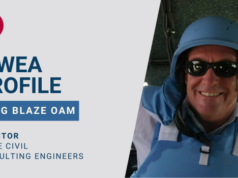In late 2008 Ville Alatyppo was working for the City of Helsinki when the Finnish capital experienced a series of unprecedented snow storms which threatened to paralyse daily life.
While the Swedish capital of Stockholm was forced to close down most of its services, Helsinki was able to keep functioning, in large part due to the actions of Alatyppo and his colleagues who were responsible for street maintenance.
“We had no procedures to follow, but we needed to keep the city running all the time,” says Alatyppo.
“So we had to make some quick decisions and work out what to do, and we actually succeeded and didn’t have to close things down.
“It gave me a lot of knowledge and experience and taught me that you need to take a holistic approach to situations like this, and to the whole issue of asset management.”
The snowstorms are only one highlight in Alatyppo’s career, which is set to culminate in his elevation from vice president to president of the International Federation of Municipal Engineering, where he has been a board member for nine years.
It will cap a trajectory which can be traced back to the age of five, when he helped his father on building sites, and progressed to a demolition job as he was simultaneously gaining his university engineering qualifications.
This then led to senior roles at tertiary institutions and at the City of Helsinki, where he became Director of Maintenance.
Alatyppo also operated his own consultancy, during which time he was awarded a patent for a technology which de-ice’s airport runways, making them safer and increasing their availability.
As the world has been challenged by climate change, Ville Alatyppo has been at the forefront of changing the approach to asset management to become more holistic, factoring in ideas around life-cycling, equity, and resilience.
“As civil engineers we really need to think long term, not just about our children’s children but way ahead of that,” he says.
“Civil engineers are at the foundation of creating the societies we live in, and we have a big role in using our expertise in helping save the environment of this small planet we live on.”
Alatyppo has also seen what he says is a “clarification” in the role of civil engineers as his career has matured.
Where previously the role was “mainly about building things”, maintenance is now a major focus in the drive for improved financial – and environmental – sustainability.
“This is what I mean about a holistic approach,” he says.
“It is about understanding where civil engineering can address the mega trends facing our societies as a whole, and taking a view which is more than just about building one new asset.
“It is much more than that now, and our work can have a major impact.”
With his increasingly global perspective Alatyppo hopes to share knowledge and drive collaboration between engineers around the world.
“We had a global cities meeting in Washington DC in June and I heard all the big US cities talking about the same issues, and these are global problems and megatrends such as climate change, budget constraints, and ageing infrastructure,” he says.
“So I’m keen to get the discussions rolling a bit more when I become the IFME president and make sure we share best practice.”
For example, Alatyppo gives the examples of cities in the Netherlands, such as Utrecht, which have achieved significantly lower carbon footprints than cities in the Nordic regions.
“They have good solutions, but not everyone knows about them,” he says.
“So if someone has a good solution, let’s share it.
“Civil engineers are really good at using tools and processes in our daily jobs, but we are not great at communicating and I think we can be better.”














